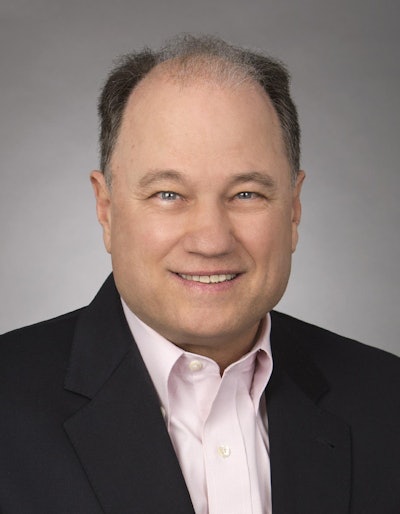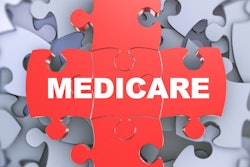
Radiology faces a bumpy road in 2023 as practices deal with upcoming economic and regulatory changes. These range from changes in how radiologists are reimbursed to how clinical decision support (CDS) tools based on appropriate use criteria (AUC) are implemented when ordering advanced imaging exams.
Experts in policy and business sounded off on recent updates and the relative unknowns in the regulatory landscape as radiology navigates the field while recovering from the disruptions the COVID-19 pandemic has caused.
"It's been a wild few years in general, watching these patterns and COVID's impacts," Sandy Coffta of Healthcare Administrative Partners commented.
Medicare Physician Fee Schedule payment cuts
Radiology is poised to see cuts in payment provisions in 2023 through the Medicare Physician Fee Schedule (MPFS). The overall change to the fee schedule conversion factor is a reduction of 4.4%, from $34.6062 to $33.0775 per relative value unit (RVU). This includes a 3% decrease in radiology, as well as decreases in subspecialties such as interventional radiology, nuclear medicine, and radiation oncology, according to estimates by the U.S. Centers for Medicare and Medicaid Services (CMS).
 Sandy Coffta.
Sandy Coffta.So, why does it seem like radiology always gets the short end of the stick?
Coffta said two factors come into play. One is that Medicare is a budget-neutral program, meaning there's only so much money that goes around no matter how much costs are changing in healthcare. The other is pressure to raise reimbursement for evaluation and management services for primary care doctors.
"When you're redistributing [funds], you're kind of robbing Peter to pay Paul," Coffta added. "Radiology, for a lot of years, has been a scapegoat because they look at how imaging volumes are growing but not how strategic use of imaging can eliminate the need for surgical diagnostic procedures or keep patients in the hospital for 48 hours for observation."
Tom Greeson, partner at Reed Smith, however, called the rulemaking process for the schedule "broken," owing to policy changes that affect payment improvements and reductions. He added that a combination of factors led to the proposed payment reductions in radiology. These include cuts into the conversion factor, the expiration of congressional intervention to increase MPFS payments by 3%, the implementation of mandatory sequester cuts, and the threat of additional sequester cuts.
"All of those factors add up to a significant reduction in payments, not to mention the fact that we are in a period of escalating inflation," he said. "It's a very challenging circumstance."
 Tom Greeson.
Tom Greeson.A 2022 study that Greeson cited found a combined mean reduction of 44.4% in inflation-adjusted payments across all included imaging studies from 2011 to 2021. By individual modality, payment cuts were found to the following: MRI (-60.6%), CT (-44.4%), ultrasound (-31.3%), and x-ray (-6.2%). Despite the deep cuts, Greeson noted that the researchers also only found a slight decline in work RVUs from a mean value of 0.79 to 0.78 (Current Problems in Diagnostic Radiology, September-October 2022, Vol. 51:5, pp. 693-698).
The experts said congressional intervention may be needed again soon to avert these steep cuts. Kathryn Keysor from the American College of Radiology (ACR), meanwhile, said the association is "taking a closer look" at malpractice RVUs, adding that inaccuracies may be present in the proposed law.
"Our consultants have found a few situations where we think there are mathematical errors," Keysor said. "Hopefully, that's correct and would impact the fee a little less than 3%."
Kicking the AUC/CDS can down the road
Along with the decreases in provisions for radiology, CMS also postponed the start of the penalty phase for its mandate on using appropriate use criteria/clinical decision support (AUC/CDS) for advanced imaging studies. This phase would deny payment to radiologists when the ordering physician does not consult a CDS system based on AUC.
 Kathryn Keysor.
Kathryn Keysor.While the new start date has yet to be determined for this phase, the ongoing educational and testing period will continue at least beyond January 1, 2023. This will happen whether or not the COVID-19 public health emergency ends in 2022.
Just because it's an indefinite delay doesn't mean CMS is giving up on this idea, at least according to experts. Keysor said the ACR has continued conversations with CMS about the program, addressing challenges that were not foreseen when the program was introduced in 2014.
"I do think that CMS is still committed to finding solutions," she said. "It's just taking them longer than they thought, and I believe the pandemic has impacted things as well."
Coffta said while she doesn't know if the AUC/CDS will go forward in its current state, a reincarnation of the program could be in the cards for the future.
Experts suggested bureaucracy and integration challenges for different systems are the cause for the uncertainty on implementation of AUC/CDS. They also noted that many radiologists they have spoken with on the topic say it's a good idea to use appropriate use guidelines to show imaging is being used in the right ways.
“Most radiology groups are probably relieved now that full implementation [of AUC/CDS] has been indefinitely delayed because they’re concerned that their referring ordering physician community isn’t prepared to submit those orders with the appropriate documentation of their AUC/CDS consultation, especially since only the imaging provider suffers payment penalties for noncompliance,” Greeson added.
The trouble with MIPS
The Merit-Based Incentive Payment System (MIPS) determines Medicare payment adjustments by using a composite performance score. Through this program, eligible clinicians may receive a payment bonus, a payment penalty, or no payment adjustment.
While MIPS performance measures have continuously been fine-tuned to protect clinicians from unfair outcomes, experts say the program overall hasn't solved what it was supposed to. Medicare began to use the system in 2017 to engage clinicians in value-based care, replacing fee schedule updates that clinicians received through the Medicare Sustainable Growth Rate. Experts said healthcare today is facing significant cuts every year and having to figure out how to mitigate delay and adjust.
"It has been a huge administrative burden to practices, and the incentives have not reached their full potential because a lot of penalties have been waived during COVID. If there's nothing in the penalty pool, there's very little to give out as an incentive," Coffta explained.
Coffta added that this problem is not due to lack of radiologist support, noting that radiologists want to provide the right care for patients. However, she added that MIPS "maybe isn't the best way" for radiologists to get to this point.
No Surprises Act
The No Surprises Act, which aims to prevent surprise billings for patients and therefore improve transparency, has been a point of contention for several medical groups, including the ACR. The association is part of a lawsuit against the federal government over insurer misuse of a portion of the act related to insurer-provider payment disputes.
Keysor said the ACR has concerns about the way the qualifying payment amount is calculated for such resolutions.
"They don't consider things like quality bonus payments or market share in that calculation," she said. "We've also been hearing about various issues from members about payors not providing initial payments for some of these services that would qualify."
Experts voiced the concern that there is no longer leverage to go out of network if difficulty is seen with payors.
Greeson said that while surprise billings "don't happen a lot" in radiology, the law will definitely have an impact, though it won't be known until the final rules are in place.
“Radiologists are already complying with aspects of the No Surprises Act,” he said. "Radiologists are required now to provide good-faith estimates for costs of services upon the request of patients who are uninsured or self-paying."




















